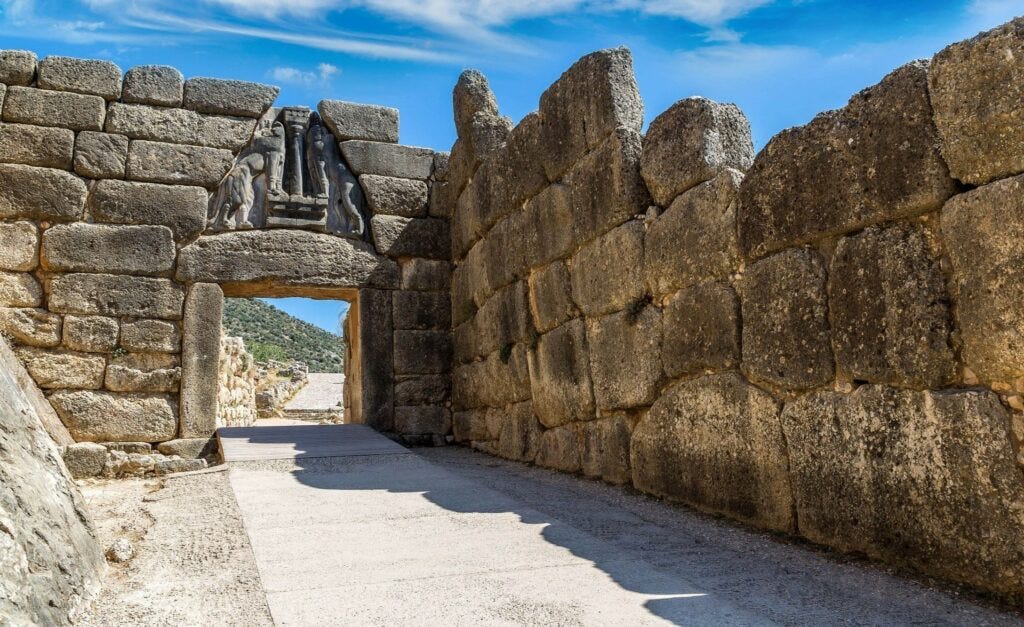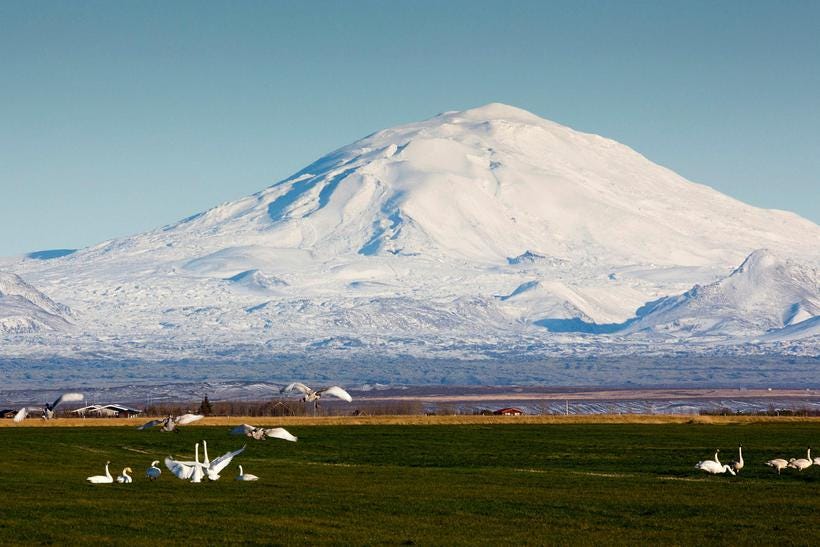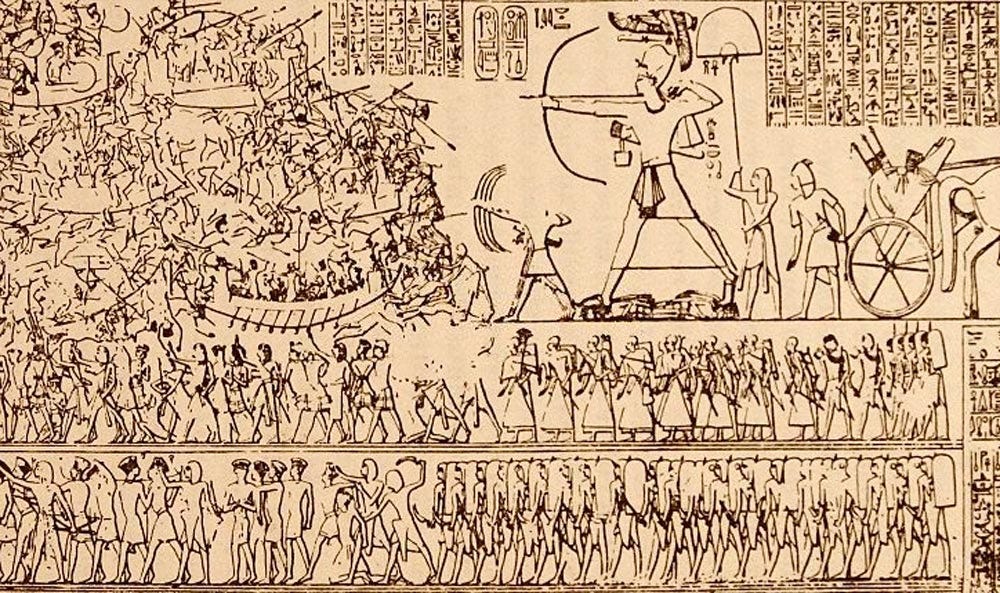
Dear Classical Wisdom Reader,
There’s a great line in Paul Lynch’s Booker Prize-winning novel Prophet Song: “The end of the world is a local event.”
This week’s article looks at one such local apocalypse, the mysterious and unknowable Late Bronze Age Collapse. This was the complete destruction of entire regions of the ancient world which led to the beginning of the Greek Dark Ages.
It’s been described as:
“the worst disaster in ancient history, even more calamitous than the collapse of the Western Roman Empire”.
The possible causes of the Late Bronze Age Collapse have fascinated historians and scholars, with multiple different theories emerging.
Was it caused by a volcanic eruption? Invasions? Or something else?
Read on below to discover what we do know about this most enigmatic of disasters… and what it can tell us about avoiding disasters of our own!
All the best,
Sean Kelly
Managing Editor
Classical Wisdom
Become A Member! From the 300 Spartans at Thermopylae to the human sacrifices of the druids, Members can discover the history of sacrifice in the ancient world in our exclusive Classical Wisdom Litterae Magazine
The Ancient World's Greatest Disaster: The Late Bronze Age Collapse
by Andrew Rattray
With a constant flow of newer and ever flashier technology these days, it’s easy to think that human civilization simply moves endlessly forward, but this isn’t always the case.
Consider, for instance, the extensive setback of industry and architecture in Europe after the fall of the Roman Empire. Humanity has faced no shortage of setbacks during our storied history, but one of the most significant, and enigmatic, is the Late Bronze Age Collapse.
For those unfamiliar, the Late Bronze Age Collapse refers to the rapid disintegration of some of the most prominent civilisations of the Eastern Mediterranean over 3,200 years ago during the first part of the 12th century BCE. It effectively wiped out the progress of human civilisation in the region for hundreds of years afterwards. In fact, the American historian Robert Drews described the event as:
“the worst disaster in ancient history, even more calamitous than the collapse of the Western Roman Empire”.
This is no exaggeration either. Supremely powerful nations of the time, such as the Mycenaeans, Babylonians, Hittites, and others, were devastated over just a few decades. Drews elaborates:
“… every significant city in the eastern Mediterranean world was destroyed, many of them never to be occupied again”.
What’s even more important to consider is that these were not just siloed city states; the whole region was an interconnected hub of flourishing trade and well-developed civilisation, not unlike our own modern world. For such well-established power structures to be upturned so rapidly, it must have taken a supreme change in the status quo; what could cause such upheaval?
Interestingly, it is far from a settled matter. Historians have been debating the root cause of the Collapse for over a century. Several theories have been put forward ranging from economic and political instability, to climate change, and even invasion, but no theory is without its detractors.
First, let’s consider economic and political instability. The whole region had deeply interconnected trade routes, and with this interconnectedness no doubt came inter-reliance. One theory of the Collapse is that a breakdown in trade between the regions caused a snowball effect, which ultimately led to devastating economic impacts that left these societies unable to recover. One region’s economy collapsed, which in turn affected another, and then another, until the whole region was in turmoil. However, the detractors of this idea outline that it would be unlikely for economic collapse to appear out of the blue, and there must be a more primary cause which ultimately started the ball rolling in that direction.
Internal unrest is one idea put forward as a potential primary cause of such an economic collapse. There is some evidence of this across the region, for example the first recorded labour strike in history occurred under the rule of Ramses III of Egypt in 1170 BCE. The stonemasons and other artisans of Deir el-Medina did not receive payment, and so threw down their tools and refused to work until their grievances were settled. This is just one example are of what historians believe was a key problem across the region: mounting inequity between the ruling and working classes, ultimately leading to rioting and unrest. Perhaps mounting internal disruption was the catalyst for the economic instability?
Some historians, such as Frank Yurco in his book End of the Late Bronze Age and Other Crisis Periods: A Volcanic Cause?, link an eruption of the Hekla volcano in Iceland (known as the Hekla 3 eruption, and dated to the 12th Century BCE) with famines in the region during the period of the Collapse. The dating of the eruption, however, is not exact, and there is contention amongst scholars who argue the eruption occurred either considerably earlier or later.
We should also consider the impact of the invasion of warlike tribes from outside the region. Of particular note are the incursions of the enigmatic tribes titled simply as ‘the Sea Peoples’ by the 19th century Egyptologist Emmanuel de Rougé. Why such a non-specific name? Well, neither de Rougé nor modern historians are sure of the exact origin of the Sea Peoples. They arrived by ship and raided across the area, but we don’t know where they came from, who they were, or what prompted them to ravage the region at the turn of the 12th century.
Much of the evidence of the Sea Peoples comes from reliefs and other records from Egypt. From these we can see that both Ramses II and his son Ramses III fought off these invaders. Archaeological evidence from the surrounding areas suggests, however, that other powers were not so successful. Sites across the region were razed by the invaders, such as Alashiya in Cyprus in 1085 BCE, as well as various coastal regions in what is now modern-day Syria.
So, as you can see, there are a lot of factors at play here. For a long while, historians considered that these events happened independently and sequentially. Historians such as Eric Cline, however, have forwarded the argument that such a simplistic view is unlikely to be the true telling:
“Based on the evidence presently available, therefore, we may be seeing the result of a systems collapse that was caused by a series of events linked together via a “multiplier effect,” in which one factor affected the others, thereby magnifying the effects of each. Perhaps the inhabitants could have survived one disaster, such as an earthquake or a drought, but they could not survive the combined effects of earthquake, drought, and invaders all occurring in rapid succession. A “domino effect” then ensued, in which the disintegration of one civilization led to the fall of the others.”
As Cline suggests, each of these factors alone was not enough to topple such powerful civilisations but taken together with each factor influencing the others, we can paint a picture of a region rocked by several body blows. Volcanic activity leading to drought across the Mediterranean and further afield may have led to migratory activity, which ultimately became invasion as groups of refugees banding together formed armies of ‘Sea Peoples’ trying to settle land for themselves and their families. These pressures in turn may have damaged trade, which in such an interconnected region could have disrupted already unstable supplies of food. This disruption could have in turn led to internal strife and rebellion as people felt their rulers were not effectively acting in their interests. Each factor worsening the others until a feedback loop finally erodes the well-established power structures of the region.
Ultimately, like so much of history, there is no one smoking gun we can point to that will perfectly explain the Late Bronze Age Collapse. We may never know how these different factors interplayed with and affected one another. We would do well, however, to remember these setbacks, lest history repeat itself.
The Bronze Age is long past and a new age of science and technology reigns now, but even our current Information age will pass to something new. Do you think we will progress to a new age of enlightenment, or will our challenges overcome us and force us to rebuild society in a world of lost knowledge?
Más info en https://ift.tt/mvdy2JX / Tfno. & WA 607725547 Centro MENADEL (Frasco Martín) Psicología Clínica y Tradicional en Mijas. #Menadel #Psicología #Clínica #Tradicional #MijasPueblo
*No suscribimos necesariamente las opiniones o artículos aquí compartidos. No todo es lo que parece.



No hay comentarios:
Publicar un comentario